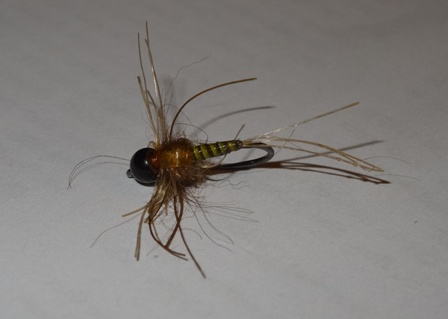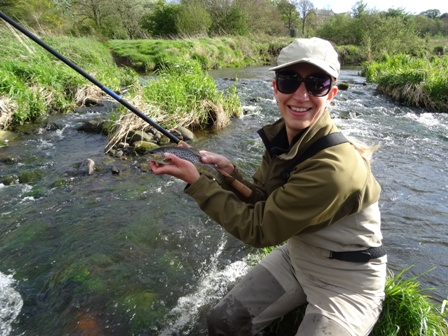| Back to Back Issues Page |
 |
|
River Fly Fishing Method Developments June 22, 2015 |
River Fly Fishing Method DevelopmentsRiver fly fishing has undergone many developments since its inception. Modern Fly fishing began on the Chalk streams of England about 220 years ago although there are accounts of people catching fish in a river on a feather as early as 200 AD in Epirus now part of modern Greece. Early rods were made of wood (no bad thing say wooden rod fans) but were heavy and cumbersome. Early fly lines were made of silk. I own a silk fly line and this is a wonderful thing! Fly fishing was upstream dry fly only....my idea of Utopia. So the old days weren’t that bad were they? No, but modern carbon rods being stiff long and light and “easy use” plastic lines have revolutionised the sport making it widely available across the globe. But this revolution was over 30 years ago. What of now?
However with European style nymphing techniques we usually fish the flies deeper and slower. In fact my belief is”the slower the better” when Czech or French nymphing. In this case the flies are designed to fish slowly on and near the bottom. Here they might resemble benthic (on the bottom) food items like caddis that might move between rocks and gravel on the riverbed. The point fly I generally use on a Czech or French Nymphing rig is the reliable Polyphaetis that has landed many fish over the years. My personal preference is for the gold headed Tungsten beaded version but the black beaded version is equally effective. There is a step by step for this pattern here for those who might be interested. On the middle dropper I will usually fish a size 14 black magic (3mm Tungsten bead) or a flash back Caddis (3mm or 4mm tungsten beads). The weight of the flies in this technique is critical. The flies should reach the bottom quite quickly (3-4 seconds) but then trundle along or tickle it (not hang up like an anchor!). The depth should be at least 2 feet and better is around 3 feet or more. The river bed should be gravel or a mixture of gravel and boulders as in the video. A good low stretch nymphing leader is essential for this technique. The indicator in this method is an “in-line” indicator and does not act as a support for the flies but is simply a visual sighter that might dip or stop if a fish takes the fly. Another “new” method is Tenkara even if it is only new to us here in the West, having been employed in Japan for centuries. This method is fast becoming a favourite of my wife Nellie also the You Tube camera girl. On her first trial she landed a fantastic wild Tees trout of around 2lb’s in weight and quickly added more.
Best Wishes to you all, Jonathan and Nellie. |
| Back to Back Issues Page |

